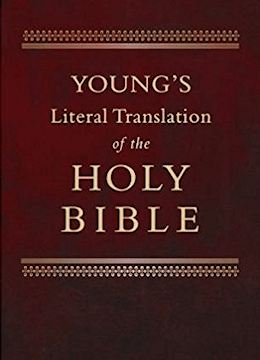Textus Receptus Bibles
Young's Literal Translation 1862
| 2:1 | And thou -- be speaking what doth become the sound teaching; |
| 2:2 | aged men to be temperate, grave, sober, sound in the faith, in the love, in the endurance; |
| 2:3 | aged women, in like manner, in deportment as doth become sacred persons, not false accusers, to much wine not enslaved, of good things teachers, |
| 2:4 | that they may make the young women sober-minded, to be lovers of `their' husbands, lovers of `their' children, |
| 2:5 | sober, pure, keepers of `their own' houses, good, subject to their own husbands, that the word of God may not be evil spoken of. |
| 2:6 | The younger men, in like manner, be exhorting to be sober-minded; |
| 2:7 | concerning all things thyself showing a pattern of good works; in the teaching uncorruptedness, gravity, incorruptibility, |
| 2:8 | discourse sound, irreprehensible, that he who is of the contrary part may be ashamed, having nothing evil to say concerning you. |
| 2:9 | Servants -- to their own masters `are' to be subject, in all things to be well-pleasing, not gainsaying, |
| 2:10 | not purloining, but showing all good stedfastness, that the teaching of God our Saviour they may adorn in all things. |
| 2:11 | For the saving grace of God was manifested to all men, |
| 2:12 | teaching us, that denying the impiety and the worldly desires, soberly and righteously and piously we may live in the present age, |
| 2:13 | waiting for the blessed hope and manifestation of the glory of our great God and Saviour Jesus Christ, |
| 2:14 | who did give himself for us, that he might ransom us from all lawlessness, and might purify to himself a peculiar people, zealous of good works; |
| 2:15 | these things be speaking, and exhorting, and convicting, with all charge; let no one despise thee! |

Young's Literal Translation 1862
Young's Literal Translation is a translation of the Bible into English, published in 1862. The translation was made by Robert Young, compiler of Young's Analytical Concordance to the Bible and Concise Critical Comments on the New Testament. Young used the Textus Receptus and the Majority Text as the basis for his translation. He wrote in the preface to the first edition, "It has been no part of the Translator's plan to attempt to form a New Hebrew or Greek Text--he has therefore somewhat rigidly adhered to the received ones."